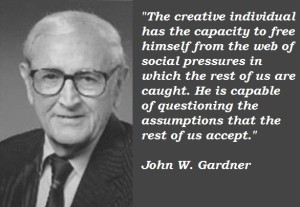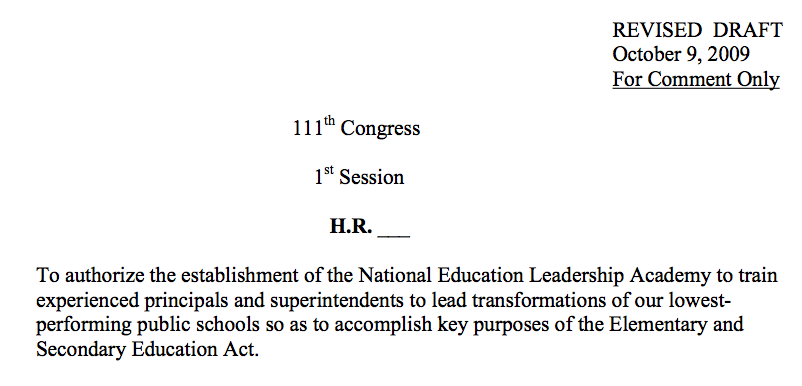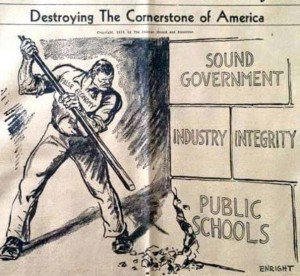For the quickest path to educational improvement — or to dismantling of the public education system — look no further than leadership.
If we want to improve schools, we need skilled leadership educated and experienced in school improvement processes. The question is, do the American people want those leaders trained by outside sources or developed within our own public education system? If we choose to go private, do we know what the leaders will be trained to do and how?
Who is Leading Leadership Training?
Joanne Barkin covered the private philanthropic efforts in leadership training quite well in “Got Dough: How Billionaires Rule Our Schools.”
Barkin explains “their vision” is “market-based.” Market-based education reform means seeing education as a commodity so reforms are based on demand, supply, and pricing. The vision was sold to us based on the assumption that higher test scores mean better education. The theory relies on parental and public demand for better “outcomes” as driven by high-stakes standardized testing.
The demand for higher scores has pushed the perceived need for charters, vouchers, higher standards, better tests, and longitudinal data systems to track every student and teacher. And when these pseudo-reforms fail to improve our lowest-performing schools, closure of schools and redistribution of students into the marketplace is presently called “a reform.” And leaders have been privately trained in these pseudo-reform methods. There is even a school closure manual to follow!
The biggest private providers of leadership training?
“They” include Marc Tucker and his National Institute for School Leadership (NISL) and Eli Broad (pronunciation rhymes with road) with his Broad Center programs. But as Barkin put it, “both the Broad Academy and Residency are not mere programs: they are ‘pipelines’.”
Ken Libby and Stan Karp explain, “The [Broad] Academy’s revised program of study will aim to prepare leaders for positions beyond the superintendency of districts to include leaders of charter management organizations and state education departments.”
Libby and Karp quote from a memo they obtained boasting,
“We have filled more superintendent positions than any other national training program, and remain the only organization recruiting management talent from outside of education.”
Working from “inside” of education is Marc Tucker’s for-profit NISL. (Note:since changed to “non-profit”) Tucker is a former Carnegie Corporation employee and current president of the D.C. think-tank the “National” Center on Education and the Economy (NCEE).
As scholar John M. Perella documented in “A Critical Study of the National Institute for School Leadership in the Commonwealth of Massachusetts,
NISL launched with “$11 million in research and development grants from the Carnegie Corporation of New York, The Broad Foundation, the New Schools Venture Fund, the Stupski Foundation and NCEE” (p 4).
“From 2001-2004, The Broad Foundation “kicked in 3.5 million’”and NISL began to put together teams of ‘the best and brightest’ for the purposes of creating a curriculum for NISL (p107).
Dr. Perella described his NISL training as an impressive combination of applying “military and business strategies to educational issues.” But he questioned the foundational philosophy of the institution and looked for answers. His findings revealed “strong elements of both privatization efforts and neoliberalism within the NISL program.”
and business strategies to educational issues.” But he questioned the foundational philosophy of the institution and looked for answers. His findings revealed “strong elements of both privatization efforts and neoliberalism within the NISL program.”
“From a critical perspective, the most alarming issue with NISL is in regards to the voice of the program. With voice comes power. Whose voice does NISL accentuate? Whose view of how public education should operate is expressed through NISL? Specifically, it is important to ask whose voice is not being heard.” (p137)
This particular “pipeline” has been working towards producing “leaders” for the market-based systemic privatization of public education since 1999. This for-profit has been granted your federal dollars.
The newest twist is having the House adopt “Pay for Success” as part of their grand scheme for ESEA reauthorization (Elementary and Secondary Education Act/ No Child Left Behind). This section of H.R. 5 is written to put taxpayer dollars into private teacher and leadership development programs. With the creator of the outcome-based theory leading the pack in leadership development, Tucker’s NISL has their documented success already on their website. But is this how WE want to judge “success” in education – based on arbitrarily set “cut scores”?
Shouldn’t our leaders vision for schools represent OUR vision?
People NEED TO KNOW that much of what they see happening in public education – now – is a result of leaders that have been churned out through the Broad Superintendents Academy, the Broad Residency, and NISL. We have no way of knowing how many graduates of this neoliberal, privatization philosophy we have working within our public institutions up to and including our own U.S. Department of Education.
The alternative?
Here is its foundational philosophy:
A “principal’s leadership and attention to the quality of instruction” along with “teacher behaviors that convey the expectation that all students are expected to obtain at least minimal mastery” are two correlates of Effective Schools. “Effective Schools” are high achieving schools with a high percentage of their students from low-income families and a high percentage being children of a color other than white. Leadership matters in matters of instruction.
Another correlate is “a pervasive and broadly understood instructional focus”; this requires a leader that can communicate.
And effective schools do use “measures of pupil achievement as the basis for program evaluation,” which was the annual requirement in the original Elementary and Secondary Education Act (ESEA) of 1965.
We don’t have to reinvent any wheels.
The “National Education Leadership Academy Act” is written for us.

Written by Gary Ratner, Director of Citizens for Effective Schools
Many citizens and education policy leaders, particularly civil rights leaders, continue to hold on to the failed test-based practices of No Child Left Behind. But what they don’t seem to realize is that if we are to improve the learning opportunities for those students being left behind, we have to have capable, responsive, responsible school leadership in all our schools.
This draft is a detailed plan to develop school leadership aimed at strengthening and improving the public education system while addressing one root cause of the existing problem of unequal access to quality education – state and local leadership “capacity.” Developing leadership capacity is a responsibility that must be met.
We identified the states that have demonstrated over the last 13 years that they can’t adequately and consistently improve the schools most in need of help. I know; I live in one.
We have identified the same districts and schools over and over since my kids started school here in Idaho in 1992. It never mattered which standards, which tests, which label, or which accountability system we used, the same schools keep coming back on the list – if they ever leave it (which was usually when we changed accounting or moved kids around). Some states lack the capacity to improve themselves.
The larger institution of public education is capable of training quality leadership. But it lacks the capacity to meet our current needs because our lawmakers have been an instrument of privatization – our public dollars creating a steady stream of capital into private pockets. What now?
The country is in a position to build leadership capacity. With ESEA reauthorization required ever five to six years, we have the opportunity to choose an alternative to the direction we have been going for the last 30 years.
Do we have legislative and executive leadership that will do the right thing? If our leaders will be guided by the People – which way will the People direct them?
Privatize the system or remain public? America’s Choice.

 Can you see a better way forward?
Can you see a better way forward?
















